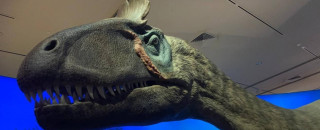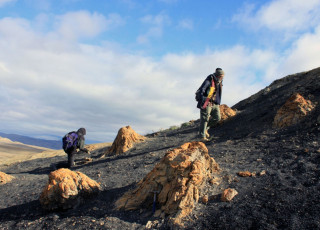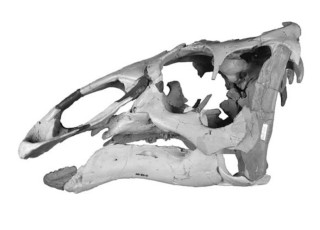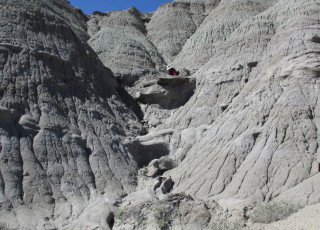Polar DinoFest: Pete Makovicky
By Riley Black
It all started with a rock lobster.
The first fossil to be described from Antarctica wasn't the bone of a fearsome dinosaur or the delicate leaf of an ancient plant, but the carapace of a lobster-like creature that lived on the seafloor during the Late Cretaceous. And, as University of Minnesota paleontologist Pete Makovicky explains, this chunk of ancient invertebrate began a long history of discovery that draws scientists to the frigid southern continent to this day.
The fossil carapace, named Hoploparia stokesi, was originally discovered by American artist F.W. Stokes during the Swedish Antarctic Expedition of 1901-1903. During that same trip, Makovicky notes, geologist Johan Gunnar Andersson collected plant fossils that indicated Antarctica was once very different from how it is today. Subsequent expeditions by different teams kept turning up more fossils, including mid-20th century discoveries that would provide crucial evidence for the idea of continental drift.
Makovicky himself has been part of modern expeditions to Antarctica, turning up strange dinosaurs that roamed what's now Antarctica during the Jurassic Period. Thankfully, field trips to the bottom of the world aren't quite as brutal as they were a century ago. "Early expeditions had to overwinter, lay depots, and rely on man-hauling or dog sleds with no way to contact anyone from the field," Makovicky says. But since the 1970s researchers have been able to use aircraft, snowmobiles, radios, satellite phones, and other bits of tech to get around their field sites and stay in touch. "Our expeditions were downright cushy by comparison," Makovicky quips.
Being able to access more fossil spots and recover fossils with the help of everything from jackhammers to helicopters has made a huge difference, allowing researchers to bring back amazing fossils. Makovicky's favorite is the carnivorous dinosaur Cryolophosaurus, a 20-foot-long predator immediately recognizable from the comb-like crest on top of its head. Aside from just how visually-impressive the dinosaur is, Makovicky says, "I have a strong personal connection to it having helped excavate and study it." The delicate skull and other fossil bones were hard-won from the chilly outcrop, and now speak to a time when dinosaurs roamed the forests of ancient Antarctica.
Click Here to Explore More of NHMU's Polar DinoFest
Riley Black is the author of Skeleton Keys, My Beloved Brontosaurus, Prehistoric Predators, and a science writer for the Natural History Museum of Utah, a part of the University of Utah in Salt Lake City. Our mission is to illuminate the natural world and the place of humans within it. In addition to housing outstanding exhibits for the public, NHMU is a research museum. Learn more.



